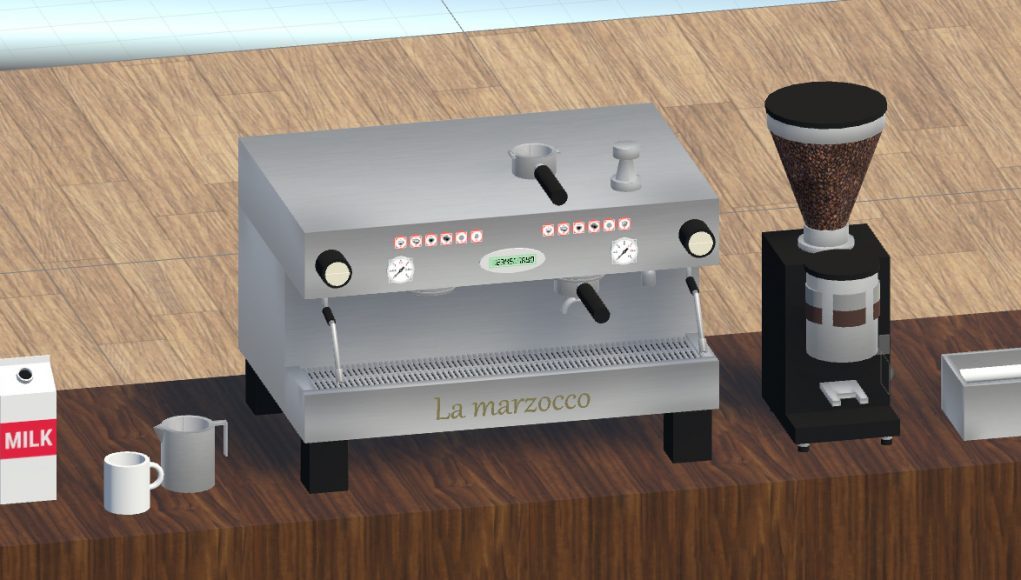The team behind Daydream, Google’s mobile VR platform, is currently conducting experiments with the aim of broadening virtual reality’s usecase to include more interactive learning. With an experimental VR espresso maker at the ready, the team says “people learned faster and better in VR” than by watching training videos when put to the test on how to brew the real thing.
Divided into two groups; one having access to YouTube videos and the other a VR training prototype featuring a 3D model of an espresso machine—replete with buttons, turn-able knobs and steam wand for frothing milk—the team gave everyone as much time as they wanted to go over the steps on how to make espresso.

The Daydream team then put the would-be baristas to task with a real espresso machine. At the end, they gave people a detailed report on how they’d done, including an analysis of the quality of their coffee. According to the experiment, participants in the YouTube tutorial group normally went through the physical task three times, while participants using the VR training method normally went through twice before obtaining a passing result.
“We were excited to find out that people learned faster and better in VR,” says Google Software Engineer Ian MacGillivray in a blogpost. “Both the number of mistakes made and the time to complete an espresso were significantly lower for those trained in VR (although, in fairness, our tasting panel wasn’t terribly impressed with the espressos made by either group!) It’s impossible to tell from one experiment, of course, but these early results are promising.”
[gfycat data_id=”HardtofindCreativeKittiwake”]
Admittedly, the test wasn’t perfect. MacGillivray says espresso wasn’t a great choice to begin with, as the physical sensation of tamping, or getting the right density of coffee grounds in the metal portafilter, “simply can’t be replicated with a haptic buzz.”
People also don’t listen to instructions or warnings. Voice overs, written instructions, hints, tutorials on how to use the controller—all of it fell to the wayside when popping a VR-newcomer into the headset. “No matter what warning we flashed if someone virtually touched a hot steam nozzle, they frequently got too close to it in the real world, and we needed a chaperone at the ready to grab their hand away.”
[gfycat data_id=”EvilHardKagu”]
The team says that VR platforms aren’t quite ready when it comes to acquiring certain types of skills either, and contends that the addition of VR gloves with better tracking and haptics would be necessary before the medium can get outside the ‘moving things and pressing buttons’ phase it’s in currently. There’s also the difficulty of giving users the freedom of choice, as every choice the Daydream team allowed the user to make, only created an exponential growth in the number of paths through the tutorial. “In the end, it was much easier to model the trainer like a video game, where every object has its own state. So instead of the trainer keeping track of all the steps the user did in order (“user has added milk to cup”), we had it track whether a key step had been achieved (“cup contains milk”),” says MacGillivray.
The team considers the VR espresso training prototype a success, saying at very least that VR is a more useful way to introduce people to a new skill, one that can easily be revisited in VR once context is established in the physical world.







